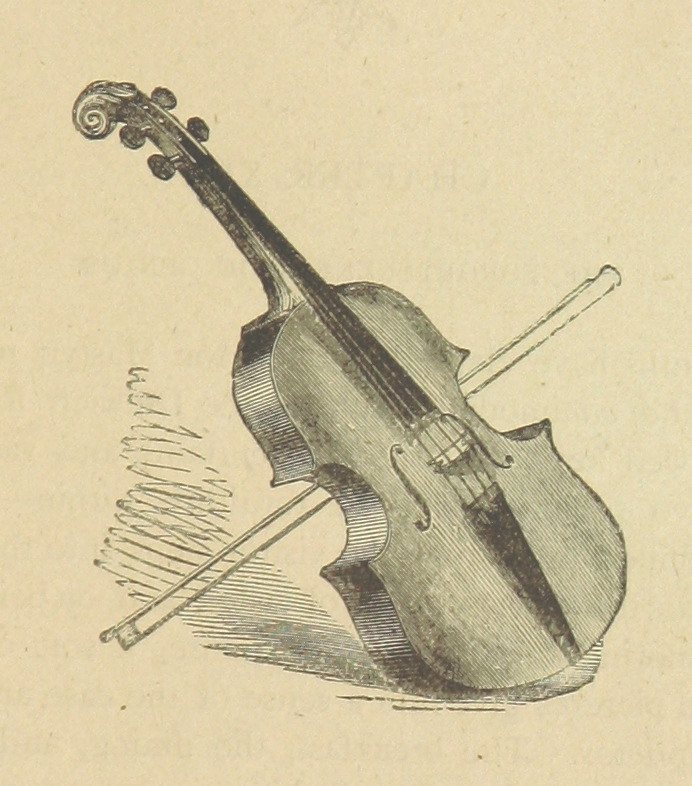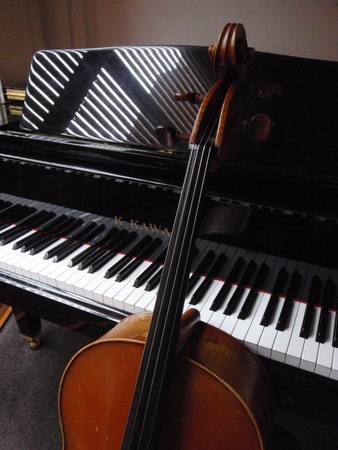|
Teaching vibrato is one area where I feel I can never have enough resources. In this article, I share the two exercises I use to introduce students to the movements involved in creating vibrato. However you choose to apply vibrato, and the historical issues involved, are another discussion - but I do think that students should be able to play with a constant vibrato as a first step, developing a more varied approach to its application later.
Polishing / dusting the fingerboard This exercise develops the up and down movement made by the hand in vibrato, and it is often the first introduction I offer to vibrato.
Oscillations in time
1 Comment
I’m trying something new for a series of posts on Tuesday: blog posts looking at how we find and keep inspiration as musicians, bloggers, writers. Some of the featured articles will include ideas on:
Practice! Sometimes fun, sometimes dreary, occasionally a battle - how to get students to practice? Every person is different in terms of what motivates them and keeps them practising music. I've got a few tips below to help you get the year off to a good start with music practice in your home.
1. Set the scene The physical location for practice is very important - there should be enough space, good lighting, and the proper equipment for practice to be undertaken - for a cellist, the right chair, a music stand, and something to prevent the endpin from slipping is crucial. Ideally you want the practice area to be free from distractions (like other children watching tv etc). Keeping the instrument 'ready to go' - for a cello this might mean the case is on the ground and open, or on a cello stand, so the instrument is not completely packed away - also removes another barrier to practising (but please only do this if the instrument is going to be safe from accidents!) 2. Set the time I really believe that most children need assistance to schedule their practice in the beginning. If you can find regular times each day to practice, that's best. It doesn't matter if practice is split into sections or takes place in one sitting. Some students might like to work on technical work in the morning, and pieces in the afternoon after school - try a few different ways of organising practice time, and observe what works best. 3. Practising on one's own or with a parent Parents are crucial in enabling a child to learn a musical instrument. It is ideal (in my belief, necessary) for parents to take notes in lessons and to help with practice at home for very young children - it is easy for a child to forget what was discussed in the lesson, and to not be aware of how that relates to what should be worked on at home. While practice together is a discipline, please note it should also be fun and enjoyable, especially if you want your child to keep playing music in the long term! Try not to get frustrated if your child cannot do everything straight away, music takes time, and they should be commended for small steps towards any musical goals which have been set. Your music teacher knows this, they will have had the same struggles with practice when they were young. Make sure to discuss practice at home with your teacher, and ask them what their expectations are. 4. Time spent practising Sometimes you might want to watch the clock, and do a certain amount of practice, at other times it's not so helpful, and better to focus on completing a set list of practice tasks. I want to put a special note in here for parents of small children: I prefer that practice takes place everyday, and I don't mind in the beginning if that practice session is only five minutes, the daily aspect is much more important to me. Your child's ability to sit and work at music will increase over time. Your teacher may differ on this point. 4. What is the best way to motivate? Obviously, the ideal inspiration for practising would be if a student is driven by their own desire to improve and to work on the music. But it takes time for most young musicians to get to this point, and there are often times where motivation is waning or can be lost. Print out the 30-day practice chart above, and use it to help motivate your child - maybe you might like to include a fun reward at the end for 30 days being completed! This kind of a practice-tracking exercise can often inspire a child to really become engaged with their music, to the point where they will not need a chart like this anymore, I have seen it happen before. This post has covered how to get practising, if you want some more ideas for what to tackle when you practise, consider purchasing The Music Lesson Record Book - notes on practice, room to write all your lesson and practice notes, and a practice idea for each week of the year (plus a create-your-own scales list in the forms version of the book). If you enjoyed this post, and the 30-day practice chart, please subscribe to my email list here!
How can you move from having a handful of students to a vibrant music teaching practice?
Sometimes musicians aren’t the best marketers - you may be a fantastic performer or teacher, but unless people know about you, it won’t help you to build a thriving teaching studio. All musicians spend years honing their skills in performance and musicianship, but the skills you need to build what is (in some respects) a business are different; you are required to be savvy in a number of other areas, and confident with things like technology and marketing. So I’ve compiled a list of tips - they are all things which I have tried out myself, and have found to work. Give them a go and see if they work for you! 1. Online presence: GET A WEBPAGE! This is crucial, and easy to do. Your webpage is like your online business card, and on it you can have your biography, including qualifications, any information about your teaching philosophy which you feel is relevant, and your contact details. You really don’t need much in the way of contact details (and, for privacy/security, you should leave off details such as your address, particularly if you are working from home) as your potential clients will already have email, if they are looking for a teacher online, which is a perfectly fine way for them to make the initial contact. You can also include pictures and sound on many websites; you can be as creative or as simple as you like. The main thing is that your website gives potential students and their parents the sense of what kind of teacher you are. If you are looking for a simple and quick option, try a provider like Weebly, where you can create a website with ease and minimum of cost. This is one of a number of options which offers easy drag and drop editing; you can look around to find others if you would prefer an alternative. 2. List your details on a teachers’ listing website Depending on where you live, there are generally a number of webpages providing music teachers’ listings for potential students. Some perform better in search engine rankings than others, and if you do search for music teachers in your home city yourself, you will be able to work out the best sites to place your details on. I have personally found Music Teachers Online to be very good. 3. Get a linkedin profile Admittedly, this does not seem like an obvious place for a music teacher to go - it’s generally used more heavily by corporate and other professionals. However, not only will a linkedin profile enable you to network with other people in your field, your profile will also show up on a google search for you, and increase your web presence. It’s really worth taking the time to do an in-depth profile, listing all your eduction and career achievements. Once it’s done, go back to your webpage and provide a link to this profile - any of your potential students and their parents can now find out more about your career to date, which will be very helpful for them when deciding whether to get in touch with you about lessons. 4. Letterbox flyer drop This is a bit more old-school, and may have varying results depending on where you live/ teach, but it is an exercise which can result in a few potential students contacting you. Use whatever skills you have in Word/Pages to produce a half-page flyer with your name, contact details and what kind of lessons you are offering. If you have the time and are at the start of building your teaching studio, it’s worth trying this. 5. Join your local professional association This is worthwhile for so many reasons. One of these reasons is that most of the music association websites keep listings for teachers, so potential students can find you, (and also know that you are an accredited music professional). 6. Build your profile: through other teaching and musical jobs Any musical work which you undertake is an opportunity to build your profile as a teacher/musician in the wider community. 7. Increase your offering Another way in which to build your teaching is to increase what kind of lessons you can offer. Maybe you have a second instrument you can teach, or you would be happy to offer theory lessons - theory teachers are not always easy to come by for students and their parents. One thing to remember is that, even when following these steps, building a thriving teaching studio can take time, but it is well worth the effort and persistence. Whether you’re just starting out (in which case, don’t forget to check if there any relevant regulations for operating a music teaching business in your city) or whether you have years of experience, hopefully there is a hint here to help you out! Thanks for taking the time to read, if you found this article useful, please consider subscribing to the RSS feed, or liking the Facebook page! |
Bonnie's Cello BlogThoughts on music learning and teaching, handouts and more. I also blog on a range of other issues as diverse as writing, renovating and cooking, click here! Hire me to writeArchives
March 2019
Categories
All

<div class=“Bonnie’s blog-button" style="width: 150px; margin: 0 auto;">
<a href="http://www.bonniesmart.com/bonnies-blog" rel="nofollow">
<img src="http://www.simplycreativehome.com/wp-content/uploads/2016/01/bonniesmart.com-cello-2.jpg" alt=“Bonnie’s blog" width="150" height="150" />
</a>
</div>
Grab this blog button!
|




 RSS Feed
RSS Feed

